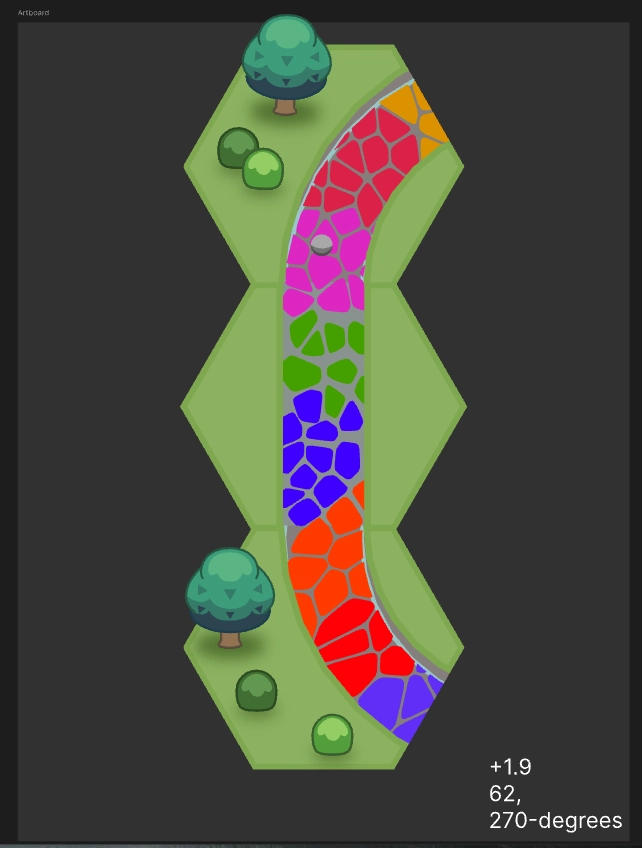Angular 19 Routing Like a Pro: Signals + Routes + loadComponent + Fallbacks
Angular 19 doesn't just bring Signals and Standalone Components to the front—it revolutionizes routing too. It's cleaner, snappier, and finally feels like building a modern frontend app instead of configuring a Java EE application in 2007. In this guide, we'll explore a practical example that combines: ✅ Angular 19 Signals ✅ Route-based component loading with loadComponent() ✅ Nested children routes ✅ A wildcard fallback route (path: '**') App Structure Here’s what we’re building: src/ app/ home.component.ts dashboard.component.ts profile.component.ts not-found.component.ts app.routes.ts main.ts Defining Routes with loadComponent() and children // app.routes.ts import { Routes } from '@angular/router'; export const routes: Routes = [ { path: '', loadComponent: () => import('./home.component').then(m => m.HomeComponent), }, { path: 'dashboard', loadComponent: () => import('./dashboard.component').then(m => m.DashboardComponent), children: [ { path: 'profile', loadComponent: () => import('./profile.component').then(m => m.ProfileComponent), }, ] }, { path: '**', loadComponent: () => import('./not-found.component').then(m => m.NotFoundComponent), }, ]; Provide router // app.config.ts import { ApplicationConfig, provideZoneChangeDetection } from '@angular/core'; import { provideRouter } from '@angular/router'; import { routes } from './app.routes'; export const appConfig: ApplicationConfig = { providers: [provideZoneChangeDetection({ eventCoalescing: true }), provideRouter(routes)] }; Creating a Component: home.component.ts import { Component } from '@angular/core'; import { RouterModule } from '@angular/router'; @Component({ selector: 'app-home', standalone: true, imports: [RouterModule], template: ` Welcome to Angular 19 Go to Dashboard ` }) export class HomeComponent { } Creating a Component: not-found.component.ts import { Component } from '@angular/core'; import { RouterModule } from '@angular/router'; @Component({ selector: 'app-not-found', standalone: true, imports: [RouterModule], template: ` NotFoundComponent `, }) export class NotFoundComponent {} Creating a Component: profile.component.ts import { Component } from '@angular/core'; import { RouterModule } from '@angular/router'; @Component({ selector: 'app-profile', standalone: true, imports: [RouterModule], template: ` ProfileComponent `, }) export class ProfileComponent {} Adding Signals (bonus reactive data!) import { Component, signal } from "@angular/core"; import { RouterModule } from "@angular/router"; @Component({ selector: "app-dashboard", standalone: true, imports: [RouterModule], template: ` Dashboard Clicks: {{ clicks() }} Click me `}) export class DashboardComponent { clicks = signal(0); } Summary Feature Purpose loadComponent() Lazy loads a standalone component children Defines nested routing within a parent path: '**' Catch-all fallback for 404s signal() Manages reactive state inside the component Final Thoughts Angular 19’s routing plus Signals makes it feel like you’re building with fine Italian UX pasta. Clean, modular, and reactive. Happy routing, and may your fallbacks always be graceful! ⚡

Angular 19 doesn't just bring Signals and Standalone Components to the front—it revolutionizes routing too. It's cleaner, snappier, and finally feels like building a modern frontend app instead of configuring a Java EE application in 2007.
In this guide, we'll explore a practical example that combines:
- ✅ Angular 19 Signals
- ✅ Route-based component loading with
loadComponent() - ✅ Nested
childrenroutes - ✅ A wildcard fallback route (
path: '**')
App Structure
Here’s what we’re building:
src/
app/
home.component.ts
dashboard.component.ts
profile.component.ts
not-found.component.ts
app.routes.ts
main.ts
Defining Routes with loadComponent() and children
// app.routes.ts
import { Routes } from '@angular/router';
export const routes: Routes = [
{
path: '',
loadComponent: () => import('./home.component').then(m => m.HomeComponent),
},
{
path: 'dashboard',
loadComponent: () => import('./dashboard.component').then(m => m.DashboardComponent),
children: [
{
path: 'profile',
loadComponent: () => import('./profile.component').then(m => m.ProfileComponent),
},
]
},
{
path: '**',
loadComponent: () => import('./not-found.component').then(m => m.NotFoundComponent),
},
];
Provide router
// app.config.ts
import { ApplicationConfig, provideZoneChangeDetection } from '@angular/core';
import { provideRouter } from '@angular/router';
import { routes } from './app.routes';
export const appConfig: ApplicationConfig = {
providers: [provideZoneChangeDetection({ eventCoalescing: true }), provideRouter(routes)]
};
Creating a Component: home.component.ts
import { Component } from '@angular/core';
import { RouterModule } from '@angular/router';
@Component({
selector: 'app-home',
standalone: true,
imports: [RouterModule],
template: `
Welcome to Angular 19
Go to Dashboard
Creating a Component: not-found.component.ts
import { Component } from '@angular/core';
import { RouterModule } from '@angular/router';
@Component({
selector: 'app-not-found',
standalone: true,
imports: [RouterModule],
template: `
NotFoundComponent
`,
})
export class NotFoundComponent {}
Creating a Component: profile.component.ts
import { Component } from '@angular/core';
import { RouterModule } from '@angular/router';
@Component({
selector: 'app-profile',
standalone: true,
imports: [RouterModule],
template: `
ProfileComponent
`,
})
export class ProfileComponent {}
Adding Signals (bonus reactive data!)
import { Component, signal } from "@angular/core";
import { RouterModule } from "@angular/router";
@Component({
selector: "app-dashboard",
standalone: true,
imports: [RouterModule],
template: `
Dashboard
Clicks: {{ clicks() }}
})
export class DashboardComponent {
clicks = signal(0);
}
Summary
| Feature | Purpose |
|---|---|
loadComponent() |
Lazy loads a standalone component |
children |
Defines nested routing within a parent |
path: '**' |
Catch-all fallback for 404s |
signal() |
Manages reactive state inside the component |
Final Thoughts
Angular 19’s routing plus Signals makes it feel like you’re building with fine Italian UX pasta. Clean, modular, and reactive.
Happy routing, and may your fallbacks always be graceful! ⚡








































































































































































![[The AI Show Episode 145]: OpenAI Releases o3 and o4-mini, AI Is Causing “Quiet Layoffs,” Executive Order on Youth AI Education & GPT-4o’s Controversial Update](https://www.marketingaiinstitute.com/hubfs/ep%20145%20cover.png)































































































































![[DEALS] Mail Backup X Individual Edition: Lifetime Subscription (72% off) & Other Deals Up To 98% Off – Offers End Soon!](https://www.javacodegeeks.com/wp-content/uploads/2012/12/jcg-logo.jpg)





































































































































































































































![Google reveals NotebookLM app for Android & iPhone, coming at I/O 2025 [Gallery]](https://i0.wp.com/9to5google.com/wp-content/uploads/sites/4/2025/05/NotebookLM-Android-iPhone-6-cover.jpg?resize=1200%2C628&quality=82&strip=all&ssl=1)

















![Apple Reports Q2 FY25 Earnings: $95.4 Billion in Revenue, $24.8 Billion in Net Income [Chart]](https://www.iclarified.com/images/news/97188/97188/97188-640.jpg)







































































































